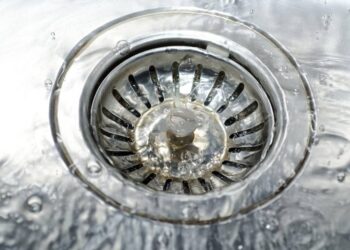Asphalt is a great paving material. Its shiny, black finish certainly looks appealing as well as to drive on its smooth surface. But like other pavements, asphalt paving looks amazing only when they are new and well-maintained. Once cracks and potholes form, the paving can look worn-down and unsightly. Hence, regular maintenance is necessary to keep it in its best shape.
Whether it is your parking deck, runway, or an outdoor play area, you have to invest in preventive maintenance to avoid cracks and further deterioration.
Perhaps, one of the most cost-effective preventive maintenance procedures for asphalt paving is crack sealing. In this method, tiny cracks are routed or widened using a grinder or saw. Then, the resulting holes are filled with a flexible sealant. This prevents water from seeping through the cracks and eroding the base leading to potholes and major damage. The sealant allows the crack to widen or tighten depending on the temperature or load. This ensures proper sealing for a long time.
While the process is simple, proper technique is essential to ensure a more durable repair and extend the life of your crack sealing project. For instance, one of the most critical aspects is the proper crack preparation as this can affect the sealant’s effectiveness. Cracks that are not properly cleaned before repair tend to have a shorter life span.
If you are planning to undertake a DIY crack sealing, make sure you know what to do.
Identify cracks
Before starting your crack sealing project, you need to identify all the cracks. There are different types of cracks but some of the most common include the transverse and longitudinal cracks. Some more serious types of cracks that might not be treated with crack sealing alone such as reflective cracks which can occur when damaged asphalt pavement is applied with another layer of asphalt, and alligator cracks which happens when crack sealing is done late. With these major cracks, the only remedy is to remove and replace the affected sections.
Timing is crucial
Spring or fall is the best time for the crack sealing project. The temperature around this season is not overly hot or cold, and the asphalt is at its most stable state. This allows you to fill up the cracks with sealant more effectively. Aside from the ideal climate, performing crack sealing before winter ensures that the pavement is ready for the freeze-thaw cycles of the upcoming winter season. If not treated before winter, water can seep through the cracks once the ice starts to melt, thereby causing more damage.
Remove vegetation
Left idle and unattended for a long time, asphalt pavements can be overrun by grass, shrubs, and other plants. And these vegetations can take root in the cracks causing damage from beneath. Make sure to remove not just the outcrops but the roots too before applying sealant.
Proper crack preparation
As mentioned above, this is the single most important factor in a successful crack sealing project. Asphalt paving experts from ABC paving & sealcoating recommend a meticulous cleaning of the entire pavement. Cracks that contain vegetation, dirt, gravel, sand, aggregate, and moisture will fail prematurely. This is because the sealant won’t set properly and stick to the crack walls.
Use a hand broom or sweeper to remove debris and dirt. Wire brushing may also be necessary for cleaning excessively dirty areas, large debris, or dried clay. After which, use a hot air lance or an air compressor to blow out smaller particles that might have been lodged into the cracks. Ideally, you should use high-pressure (at least 90 PSI) compressed, dry air to achieve the desired cleanliness. Even the tiniest of gravel or dust can weaken the effectiveness of the crack sealant. Likewise, moisture within the crack walls can affect the setting of the sealant.
Saw cutting or routing is also done to enlarge the hole and allow the sealant to adhere to the sidewalls of the crack more effectively. This can increase the life of the crack sealing project by up to 40%.
Thoroughly dry the crack
Moisture can prevent the sealant from adhering to the crack walls, thereby increasing the chances of premature failure. Avoid performing crack treatments during the rainy or winter season, at night, or when the climate is below the dew point. It can be hard to identify moisture, much less, completely dry the crack with these conditions. To ensure that the cracks properly dry up, the use of a hot air lance is recommended.
Moist can easily form even after drying the cracks. So, make sure to apply the sealant immediately after performing hot air lancing.
Choose the right sealant
There are various types of sealants available. Sealant properties are different in terms of viscosity, ASTM type, intended climate, and other characteristics. Be sure to use the correct sealant that is compatible with your asphalt, the approved specification, and the climate. You also need to consider the melter type you’ll use. Take note that indirect-fired and direct-fired sealants cannot be mixed up. In case you change sealant between jobs, be sure to completely drain the tank before adding a new, different sealant. Mixing sealants might affect their chemical and adhesive properties. Carefully read the manufacturer instructions as there can be differences in the way sealants can be handled and applied.
Follow safety protocols
Even if crack sealing seems simple and safe, make sure to use safety equipment such as safety cones, signal lights, and other tools to minimize risks, and wear proper PPE such as mask, gloves, eye protector/goggles, and suit. You should also check your equipment before using them. More than anything else, safety first!






